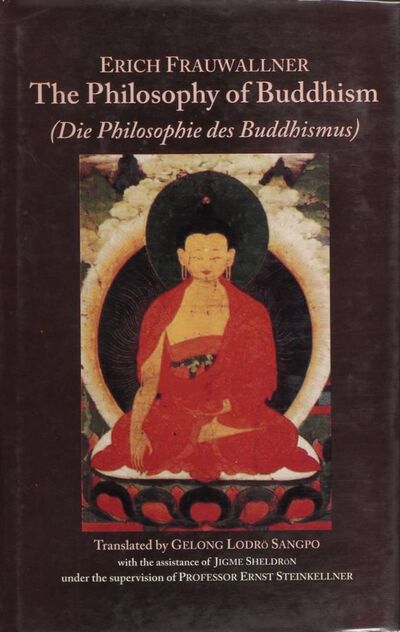No edit summary |
No edit summary |
||
| Line 147: | Line 147: | ||
****{{i|CFE.1. The works of Vasubandhu the Elder and Vasubandhu the<br> Younger|231}} | ****{{i|CFE.1. The works of Vasubandhu the Elder and Vasubandhu the<br> Younger|231}} | ||
****{{i|CFE.2. Synopsis of the doctrines of the "Twenty Verses" and<br> "Thirty Verses"|232}} | ****{{i|CFE.2. Synopsis of the doctrines of the "Twenty Verses" and<br> "Thirty Verses"|232}} | ||
*****{{i|CFE.2.1. The mental complex as three transformations of cognition|232}} | *****{{i|CFE.2.1. The mental complex as three transformations of<br> cognition|232}} | ||
*****{{i|CFE.2.2. The mental complex and the seeds of permeation|233}} | *****{{i|CFE.2.2. The mental complex and the seeds of permeation|233}} | ||
*****{{i|CFE.2.3. The mental complex in relation to the phenomenal world, highest reality and other beings|234}} | *****{{i|CFE.2.3. The mental complex in relation to the<br> phenomenal world, highest reality and other beings|234}} | ||
*****{{i|CFE.2.4. The doctrine of liberation|235}} | *****{{i|CFE.2.4. The doctrine of liberation|235}} | ||
****{{i|CFE.3. Introduction to the Viṃśatikā Vijñaptimātratāsiddhi|235}} | ****{{i|CFE.3. Introduction to the Viṃśatikā Vijñaptimātratāsiddhi|235}} | ||
Revision as of 22:14, 4 June 2020
The translation of Erich Frauwallner's Die Philosophie des Buddhismus, first published in 1956, opens up a classic introduction to Buddhist thought to a broader English language readership. The book covers the period of early canonical literature with examples of its philosophically relevant ideas, followed by the principal philosophical concepts of systematic Sravakayana Buddhism. In the main part of the book, Frauwallner presents the first survey of the development of the philosophical systems of Mahayana Buddhism. He was well aware of the limitations in presenting only the Buddhist philosophy of the "classical", i.e., the systematic period, and does not seem to have been ready to add the philosophically creative new postsystematic tradition of Buddhist epistemology and logic, a major subject of his subsequent years of research.
Frauwallner's way of translating was straightforward: to remain as close as possible to the original text while presenting it in a clear and readable way in order to convey an accurate impression of its meaning. For technical terms in the source materials he maintained a single translation even when various meanings were suggested. For clarity regarding such variations of meaning he relied on the context and his explanation.
The same approach was taken by the translator of the present book. Although his translation attempts to be faithful to the 1994 edition of Die Philosophie des Buddhismus, he inserted helpful additional headlines into the text and considerably enlarged the index. All other additions by the translator are given within square brackets. Besides this, he created an Appendix, which contains one of Frauwallner's more important articles "Amalavijnana and Alayavijnana" (1951) to complement the long Yogacara section of the book, a bibliography of selective publications after 1969. The URLs for many of the source materials were also conveniently provided. (Source: Motilal Banarsidass)
| Citation | Frauwallner, Erich. The Philosophy of Buddhism (Die Philosophie des Buddhismus). Translated by Gelong Lodrö Sangpo with the assistance of Jigme Sheldrön, under the supervision of Ernst Steinkellner. Delhi: Motilal Banarsidass, 2010. Originally published 1956 by Akademie Verlag as Die Philosophie des Buddhismus (Berlin). |
|---|---|

